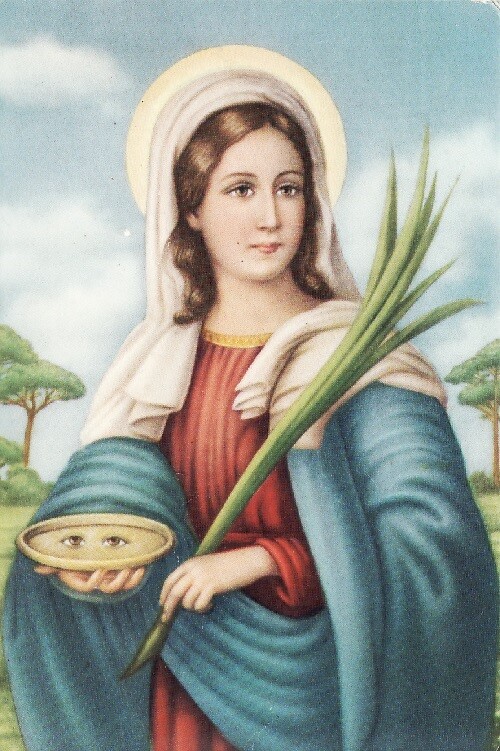St. Lucy: Our Patron Saint

Lucy lived in the fourth century in Sicily. Her name means “light” in Latin and is related to the word“lucid,” which means “radiant, clear and understandable.”
When her mother became very ill, Lucy helped her make a pilgrimage to the shrine of St. Agatha. Lucy and her mother prayed by the shrine for many hours before falling asleep. Suddenly, St. Agatha appeared to St. Lucy. She told Lucy her mother would be cured and that Lucy would someday be a martyr for her faith. The next morning, Lucy’s mother awoke completely cured.
A few years later, a pagan man wanted to marry Lucy. She wanted to remain a virgin and serve only God. The man was furious at her refusal and brought soldiers to kill her. When the soldiers tried to move her, they could not do so. They harnessed Lucy to bulls, but she could still not be moved. The soldiers covered her in oil and started a fire, but it did not burn her. Her eyes were torn out, but she still refused to abandon her faith. Finally, she was stabbed with a sword and died, as the vision of St. Agatha had predicted.
Before Lucy died, her sight was miraculously restored. For this reason, she is the patron of the blind and those suffering from eye diseases.
Lucy is a favorite saint of many around the world. In Sweden her feast day of December 13 is one of the shortest days of the year in the middle of winter. The Swedes celebrate this change of season with a Festival of Light. On this day the youngest daughter dresses in white and wears a crown of lit candles. She wakes the rest of the family with coffee, rolls and a special song. In other European countries young girls walk through their neighbourhood holding candles and singing carols.
By Serse82 - Own work, Public Domain,
